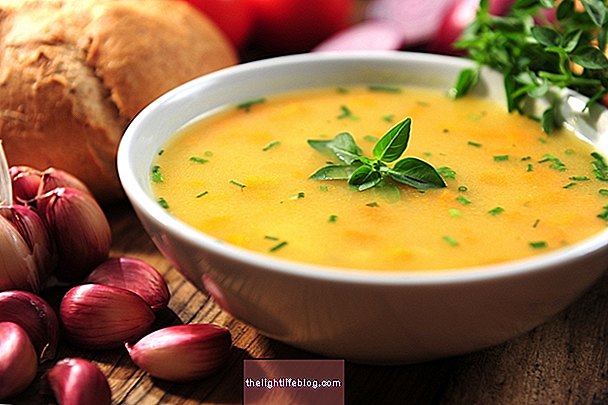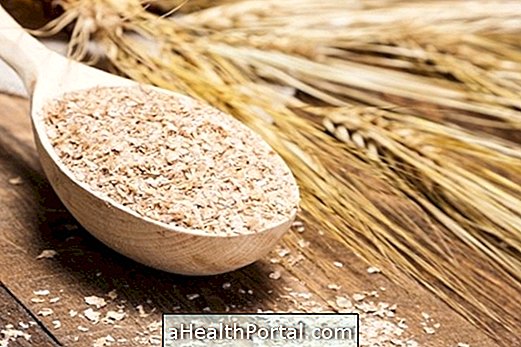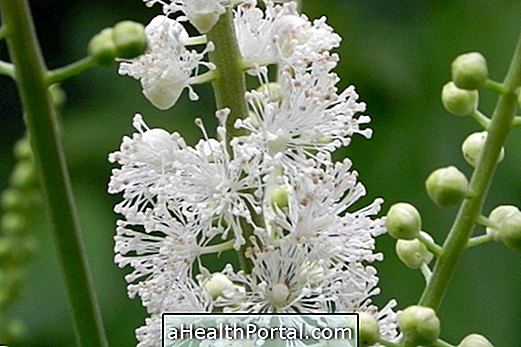Earl's fruit, also known as anona or pinecone, is a fruit rich in nutrients such as fiber, vitamins B and C and minerals, with antioxidant and anti-inflammatory properties that help to fight pain and inflammation, increase the defenses of the body and control blood sugar levels. In addition, the count's fruit also has minerals such as potassium and calcium, necessary for the regulation of blood pressure, and phosphorus and magnesium, essential for bone health.
The scientific name of the count's fruit is Annona squamosa, and is generally confused with another fruit of the same species, atemoia, which is the result of the cross between the count's fruit and the cherimoia. However, atemoia is tastier than the count's fruit and has fewer seeds, but has different properties and benefits and should be consumed in moderation by diabetics. Check out the health benefits of atemoia.
Although this fruit has several health benefits, it is important to pay attention to the peel and its seeds, as they have a toxic effect and are often used in the preparation of insecticides.

The main health benefits of the earl are:
1. Helps you lose weight
The count's fruit is low in calories, each 100 g of raw fruit has approximately 82 calories, which can help with weight loss diets. In addition, it is rich in fibers that increase the feeling of satiety, which helps to reduce hunger and lose weight.
2. Improves the functioning of the digestive system
The count's fruit is very rich in fibers that help to regulate the intestine, favor the increase in the volume of feces, increase the movement of the intestine and facilitate the elimination of feces, being an excellent option to prevent constipation.
3. Helps control blood glucose
Some studies show that the antioxidants present in the aqueous and alcoholic extract made with the leaves of the count's fruit can help regulate blood sugar levels, by having a protective effect on the beta cells of the pancreas, responsible for the production of insulin in the body, helping to regulate insulin levels and reduce blood glucose, and can be an important ally in the prevention and treatment of diabetes.

4. Controls high blood pressure
The count's fruit contains large amounts of potassium, which is a substance that helps increase the relaxation of blood vessels, allowing blood to circulate more easily, helping to lower blood pressure, which can be very useful for people who have high pressure.
In addition, alkaloids and peptides, such as cyclosquamosin, present in the earl's fruit seed, act as a natural blocker of calcium channels, inhibiting the release of a neurotransmitter, norepinephrine, which is responsible for increasing blood pressure, and thus, it also contributes to lower blood pressure.
5. Strengthens the immune system
The count's fruit is rich in vitamin C, a powerful antioxidant, which stimulates the production of white blood cells that are essential defense cells to prevent and fight infections, colds and flu, and therefore the count's fruit helps to strengthen the system immune.
6. Keeps bones healthy
The count's fruit is rich in calcium, phosphorus and magnesium, which are essential minerals to strengthen, increase bone strength and density, maintaining bone health, which can help prevent diseases such as osteoporosis, osteopenia or rickets, for example.

7. Improves skin quality
The vitamin C present in the count's fruit acts by increasing the production of collagen which is important to combat sagging and wrinkles in the skin, improving the quality and appearance of the skin.
In addition, the antioxidant action of vitamin C helps to fight free radicals that cause skin aging.
8. Improves wound healing
The alcoholic extract of the leaves of the count's fruit helps in the healing of wounds on the skin, by stimulating the skin cells, and forming glycosaminoglycans and collagen important for wound healing.
In addition, the alcoholic extract of the count's fruit leaves has anti-inflammatory and antihistamine properties, which reduce the production of inflammatory substances such as prostaglandins, and swelling, and can be used to assist in the treatment of wounds.
9. Reduces pain
The alcoholic extract of the count's fruit leaves has analgesic and anti-inflammatory properties, helping to decrease pain by inhibiting the production of substances such as cytokines and interleukins, responsible for the sensation of pain.

10. Helps to fight cancer
Some laboratory studies with breast, liver, intestine, ovary and lung cancer cells show that both the fruit itself, as well as its seed or the aqueous extract made with leaves or seeds of the count's fruit, due to bioactive compounds and its antioxidant content, such as anosquamosinas and anosquaminas, have antitumor action, reducing the proliferation of cancer cells.
However, studies in humans that prove this benefit are still needed.
Nutritional information table
The following table shows the nutritional composition for 100 grams of raw count fruit.
Components
Quantity per 100 g
Energy
82 calories
Proteins
1.7 g
Fats
0.4 g
Carbohydrates
16.8 g
Fibers
2.4 g
Vitamin A
1 mcg
Vitamin B1
0.1 mg
Vitamin B2
0.11 mg
Vitamin B3
0.9 mg
Vitamin B6
0.2 mg
Vitamin B5
0.13 mg
Vitamin C
17 mg
Beta carotene
6 mcg
Sodium
11 mg
Potassium
240 mg
Calcium
6 mg
Iron
0.3 mg
Phosphor
31 mg
Magnesium
23 mg
It is important to note that to obtain all the benefits mentioned above, the count's fruit must be part of a balanced and healthy diet.
How to consume
The count's fruit can be eaten fresh, roasted or boiled, and can also be used in the preparation of ice cream, vitamins or tea.
Another way to consume this fruit is in the form of juice, being a healthy, nutritious and easy to prepare option.
Count fruit juice

Ingredients
- 4 ripe fruits of the count;
- 1 apple without peel;
- 2 cups of water;
- 2 ice cubes.
Preparation mode
Cut the count's fruit in half, remove and discard the peel and seeds. Then add all the ingredients in the blender, mix until smooth and drink.
Was this information helpful?
Yes No
Your opinion is important! Write here how we can improve our text:
Any questions? Click here to be answered.
Email in which you want to receive a reply:
Check the confirmation email we sent you.
Your name:
Reason for visit:
--- Choose your reason --- DiseaseLive betterHelp another personGain knowledge
Are you a health professional?
NoMedicalPharmaceuticalsNurseNutritionistBiomedicalPhysiotherapistBeauticianOther
Bibliography
- CHENGYAO, Ma; et al. A Review on Annona squamosa L .: Phytochemicals and Biological Activities. The American Journal of Chinese Medicine. 45. 5; 933-964, 2017
- NEETHU, Simon K .; SANTHOSKUMAR, R .; NEETHU, S. Kumar. Phytochemical analysis and antimicrobial activities of Annona squamosa (L) leaf extracts. Journal of Pharmacognosy and Phytochemistry. 5. 4; 128-131, 2016
- PORTUGUESE FOOD INFORMATION PLATFORM. Food Composition: Anona. Available in: . Accessed on 17 Mar 2021
- BHATTACHARYA, Anshuman; CHAKRAVERTY, Raja. The pharmacological properties of Annona squamosa Linn: A Review. International Journal of Pharmacy and Engineering. 4. 2; 692-699, 2016


.jpg)























